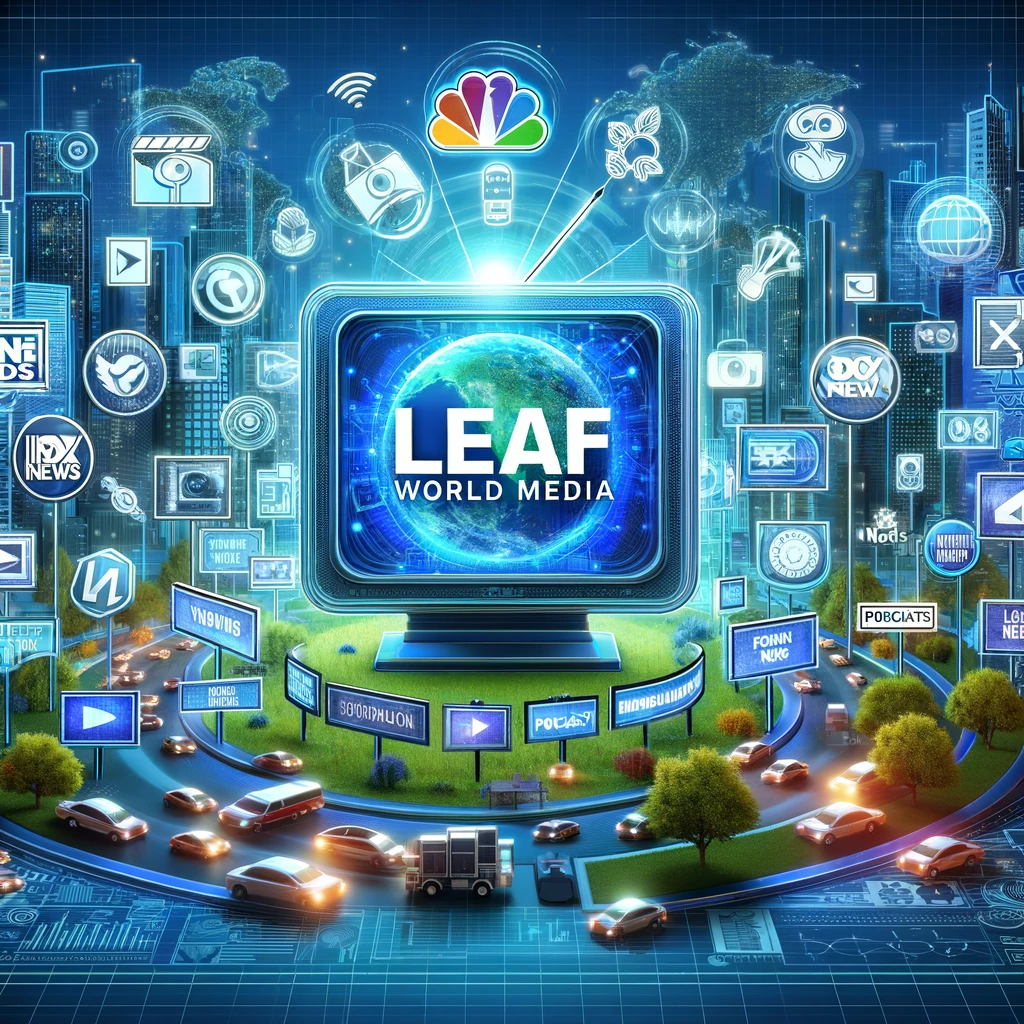Key Takeaways
- Adobe’s AI tools automate marketing processes, reducing the time and effort required for campaign management.
- These tools enhance the quality of content by using AI to generate creative assets, making ads more engaging.
- Real-time analytics provided by AI tools help marketers make data-driven decisions quickly.
- Small businesses benefit from AI tools as they level the playing field with larger competitors.
- Integration with existing Adobe Creative Suite makes these tools accessible and easy to use for current Adobe users.
Revolutionizing Digital Advertising with Adobe’s AI Tools
Digital advertising has come a long way, and Adobe’s AI-powered marketing tools are leading the charge in transforming how businesses approach their marketing strategies. These tools are designed to automate, enhance, and personalize advertising efforts, making them more efficient and effective.
How AI Improves Marketing Productivity
AI has transformed the marketing landscape by automating the repetitive tasks that used to take up so much time. Adobe’s AI tools go beyond this by enhancing content creation and campaign management. This means businesses can concentrate on strategy and creativity, rather than being overwhelmed by everyday tasks.
For example, AI has the ability to automatically examine large amounts of data to find patterns and understand what consumers want. This allows marketers to customize their strategies. This means that campaigns can be started more quickly and more accurately, which ultimately leads to better outcomes.
Improving Content Creation and Delivery with AI
In the world of digital advertising, content is the ultimate ruler, and Adobe’s AI tools can significantly improve both creation and delivery. With the help of AI, marketers can create top-notch content that will strike a chord with their audience. These tools can help in creating captivating visuals, persuasive copy, and interactive elements that will surely catch the eye.
On top of that, AI makes sure that content is delivered to the right audience at the right time. By analyzing user behavior and preferences, Adobe’s AI tools can personalize content delivery, increasing the chances of engagement and conversion. For marketers navigating this landscape, understanding data privacy laws is crucial to ensure compliance and build trust with users.
Immediate Analysis for Smart Choices
Adobe’s AI tools excel in providing immediate analysis. This gives marketers the chance to make smart choices on the fly, tweaking their strategies as required. Immediate insights mean that companies can respond to shifts in the market and consumer behavior right away, keeping one step ahead of their rivals.
For instance, if an ad is not generating the expected results, marketers can modify the content or the target audience based on the most recent data. This adaptability guarantees that campaigns are always set up for success. For more insights, check out this guide on transforming business success.
Getting to Know Adobe’s AI Marketing Tools

Adobe presents a collection of AI-driven tools that aim to transform the digital marketing landscape. These tools are developed to streamline and improve different facets of advertising, ranging from creating content to analyzing performance. Let’s explore the main elements of Adobe’s AI marketing toolkit, which play a crucial role in transforming business success.
Adobe GenStudio: This tool is geared towards performance marketing and aids brands in creating, managing, and optimizing their campaigns.
Adobe Firefly Video Model: This tool, powered by AI, enables the creation of high-quality video content with ease.
Integration with Adobe Creative Suite: This feature ensures seamless compatibility with existing Adobe tools, allowing for a smooth workflow.
A Look at Adobe GenStudio for Performance Marketing
Adobe GenStudio is a robust tool designed with performance marketing in mind. It enables marketers to create, manage, and optimize advertising campaigns with ease. By utilizing AI, GenStudio automates many of the tedious aspects of campaign management, allowing marketers to concentrate on strategic decisions.
GenStudio offers a deep dive into the performance of marketing campaigns, enabling marketers to distinguish between successful strategies and those that fall short. This approach, driven by data, guarantees that campaigns are consistently fine-tuned for the highest possible outcomes.
A Look at Adobe Firefly Video Model
Video content is a key element in today’s digital advertising, and Adobe’s Firefly Video Model is simplifying the process of creating high-quality videos. This AI-driven tool automates the video creation process, enabling marketers to create captivating content swiftly and effectively. For more insights on how AI is transforming business success, explore our detailed article.
Firefly uses current video content and user likes and dislikes to create videos that are both pertinent and engaging. This guarantees that companies can keep a strong visual presence on digital platforms without needing a lot of video production resources.
Adobe’s AI-powered marketing tools are revolutionizing the digital advertising landscape by providing businesses with cutting-edge technology to enhance their marketing strategies. These tools leverage artificial intelligence to analyze consumer behavior, predict trends, and optimize ad placements, ensuring maximum reach and engagement. By integrating these innovative solutions, companies can significantly improve their advertising efficiency and ROI. For those interested in a deeper understanding of how these tools can benefit their business, check out this comprehensive strategy guide.
Compatibility with Other Adobe Creative Tools
A significant benefit of Adobe’s AI marketing tools is their flawless compatibility with other Adobe Creative Suite products. This compatibility allows marketers to effortlessly blend AI tools into their current workflows, enhancing productivity and innovation.
For instance, Adobe Photoshop and Illustrator can be used with AI tools to create incredible visuals, and Adobe Premiere Pro can be used with the Firefly Video Model for video editing. This integrated ecosystem allows marketers to create high-quality content without needing extra resources. For more insights on marketing strategies, check out our comprehensive strategy guide.
Improving Content Quality and Interaction
Adobe’s AI marketing tools greatly improve the quality of content, making sure that every piece of marketing material is not only visually attractive but also interactive for the target audience. By using AI, marketers can create content that connects with consumers on a more profound level, leading to increased interaction and conversions.
For example, AI has the ability to determine which content types perform best with certain demographics, which allows marketers to adjust their strategies as needed. This approach, which is based on data, ensures that content is always relevant and engaging, keeping audiences interested and involved.
In addition, AI-powered tools like Adobe GenStudio provide recommendations to enhance content based on real-time analytics. These insights aid marketers in fine-tuning their strategies and creating content that pops in a saturated digital environment, whether it’s modifying the visuals or fine-tuning the copy.
Enhancing Customization in Ad Campaigns
In the current digital advertising landscape, customization is crucial, and Adobe’s AI tools are experts in this field. By examining consumer data, AI can assist marketers in crafting customized experiences that connect with each user. This degree of personalization guarantees that marketing communications are pertinent and effective, resulting in increased conversion rates.
For instance, AI has the ability to divide audiences according to their likes and actions, which lets marketers customize their messaging. This focused method makes sure every consumer gets content that fits their interests, boosting the chances of interaction and conversion.
Real-Life Applications and Triumphs
For a comprehensive understanding of the benefits of Adobe’s AI marketing tools, we should look at some actual cases of companies who have effectively utilized these technologies to improve their advertising strategies.
Adobe AI’s Impact on Small Businesses
Think about a small e-commerce business that had a hard time competing with bigger brands because of its limited resources. This business, after implementing Adobe’s AI tools, was able to automate a lot of its marketing processes. This automation gave the business more time and resources to focus on strategic planning.
By using AI to gain insights, the company was able to create marketing campaigns that were personalized and resonated with its target audience. This resulted in a significant increase in engagement and sales, proving that even small businesses can compete on a larger scale with the right tools.
Big Business Campaigns and Their Outcomes
On a bigger scale, a big business brand employed Adobe’s AI instruments to make its worldwide advertising efforts more efficient. By incorporating AI into its current marketing plan, the brand was able to refine its campaigns across various channels, guaranteeing uniform messaging and branding.
The outcome was a significant boost in brand recognition and customer interaction, showcasing the strength of AI in handling intricate marketing campaigns. This triumph story underscores how AI can improve efficiency and efficacy, even for large-scale operations.
Before and After AI Adoption: A Comparative Study
Prior to the adoption of AI tools, numerous businesses grappled with laborious and inefficient manual marketing processes. But after Adobe’s AI-powered solutions were introduced, these businesses saw a radical change in their advertising strategies.
For example, a side-by-side comparison of a company’s marketing strategies before and after integrating AI showed notable enhancements in productivity and outcomes. Marketing campaigns that previously required weeks to organize and implement can now be started in just a few days, with improved focus and customization.
Not only did this change save time and resources, it also resulted in increased engagement and conversion rates, demonstrating the power of AI in contemporary marketing approaches.
Potential Hurdles and Factors to Keep in Mind
Even though Adobe’s AI-powered tools provide countless advantages, there are still potential hurdles and factors that companies need to consider when implementing these technologies into their marketing plans.
One of the main issues is making sure that AI tools are used in an ethical and responsible manner. Given their ability to analyze huge volumes of consumer data, businesses need to be aware of privacy issues and comply with data protection laws.
Getting the Hang of Things
There’s a bit of a learning curve when you’re new to AI marketing tools. It’s important for businesses to invest in training and support, so their teams can use these technologies to their full advantage.
Striking a Balance Between Human Ingenuity and AI Efficiency
AI can streamline many facets of marketing, but it’s important to strike a balance between human ingenuity and AI efficiency. Ingenuity is still an essential element of effective marketing, and companies need to make sure their strategies reflect a combination of both human and AI contributions.
Moral Implications of AI in Advertising
As the presence of AI in advertising grows, so does the importance of moral implications. Companies must be clear about their use of AI and guarantee that their marketing methods are in line with moral norms.
By dealing with these issues and considerations, companies can successfully incorporate AI into their marketing strategies. This will allow them to enjoy improved efficiency and effectiveness while still maintaining ethical integrity.
What to Expect in the Future of AI and Advertising
AI’s role in advertising is only going to grow, and the possibilities are exciting. Technological progress is leading to more advanced and effective marketing strategies. As AI continues to develop, it will provide even more features that will change the way businesses communicate with their customers.
Anticipated Improvements in AI Tools
Looking to the future, AI tools are set to become even more sophisticated and potent. These improvements will probably feature enhanced natural language processing, allowing AI to comprehend and create human-like text with increased precision. This will boost the standard of automated content creation, making it more pertinent and captivating.
Moreover, AI tools are expected to integrate more sophisticated machine learning algorithms, which will enable them to process data more quickly and accurately. This will give marketers a more comprehensive understanding of consumer behavior, allowing them to develop more focused and successful campaigns.
There’s also the thrilling prospect of combining AI with other up-and-coming technologies like augmented reality (AR) and virtual reality (VR). This could pave the way for new interactive and immersive advertising experiences that grab the attention of consumers in unique ways.
Forecasts for the Industry Scenario
With AI getting more common in advertising, we’re likely to see major shifts in the industry scenario. Businesses that are quick to adopt AI stand to gain an advantage, as they’ll be able to provide marketing strategies that are more personalized and effective. This change will nudge companies into adopting AI technologies if they want to stay competitive and relevant.
Moreover, the need for marketing solutions powered by AI will increase, which will result in a boost in the investment for AI research and development. This will propel innovation and create even more sophisticated tools and technologies that will mold the future of advertising.
How AI is Transforming Advertising Strategies
AI is set to revolutionize advertising strategies by equipping marketers with the tools they need to gain a deeper understanding of their audiences. AI allows businesses to sift through enormous volumes of data to unearth insights that guide their marketing decisions. This data-centric approach will result in more successful campaigns that connect with consumers and yield results.
Furthermore, AI will give marketers the ability to automate many aspects of their campaigns, from creating content to analyzing performance. This automation will save time and resources, giving marketers the opportunity to concentrate on strategic planning and developing creativity. As a result, companies will be able to carry out more effective marketing strategies that yield real results, as highlighted by Adobe’s GenStudio for Performance Marketing.
Common Queries
As AI continues to make waves in the advertising industry, many marketers are left with questions about how these technologies function and the advantages they provide. Here are some common queries and their responses.
In addition, Adobe’s AI tools offer up-to-the-minute analytics, allowing marketers to make decisions based on data in a timely manner. This guarantees that campaigns are always primed for success, leading to improved engagement and conversion rates.
How can these tools assist small businesses in competing with larger brands?
Adobe’s AI tools give small businesses the ability to compete with larger brands by providing them with the resources to create high-quality marketing campaigns without the need for large budgets or teams. These tools automate many aspects of marketing, allowing small businesses to focus on strategy and creativity.
Thanks to the insights provided by AI, small businesses can now create marketing campaigns that are custom-tailored to their target audience. This ensures that the marketing messages are not only relevant but also impactful, resulting in higher engagement and conversion rates.
Does AI-driven marketing raise privacy issues?
Even though AI-driven marketing offers a host of advantages, companies must be aware of potential privacy issues. AI tools sift through a lot of consumer data, which may lead to questions about data security and privacy.
Companies need to address these issues by following data protection laws and ensuring that their use of AI is both transparent and ethical. This will help them build trust with their customers and keep their marketing practices honest.
Will AI tools ever fully take over the creative side of advertising?
Despite the fact that AI tools can automate a lot of marketing tasks, they will never fully replace the human element of creativity. Creativity is still an essential part of effective advertising, and businesses need to make sure their strategies include a mix of both human and AI contributions.
AI tools can boost creativity by offering data-driven insights and automating repetitive tasks, enabling marketers to concentrate on creating innovative and captivating content. Nonetheless, the human touch is still crucial in creating persuasive marketing messages that resonate with audiences. For more insights, check out this guide on transforming business success.
How much do Adobe’s AI tools cost?
The price of Adobe’s AI tools isn’t set in stone. It fluctuates based on the particular tools and services you choose. But Adobe provides flexible pricing options to suit businesses of all sizes, whether you’re a small startup or a large enterprise.
HTML code:
- Generally, the cost for Adobe Creative Cloud subscriptions can be anywhere from $20 to $80 a month, depending on the plan and features you choose.
- There might be extra charges for additional AI-powered tools and services, depending on how much you use them and what specific needs you have.
Businesses need to think about what they need and how much they can spend before they decide to use Adobe’s AI tools. If they do this, they can make sure they’re spending money on the right things to reach their marketing goals.
Ultimately, Adobe’s AI-driven marketing tools provide a plethora of advantages for companies seeking to improve their advertising efforts. These tools enable marketers to develop more impactful and appealing campaigns by automating tasks, enhancing content quality, and delivering immediate insights. As AI continues to advance, it will become more and more influential in determining the future of digital advertising.







Leave a Reply